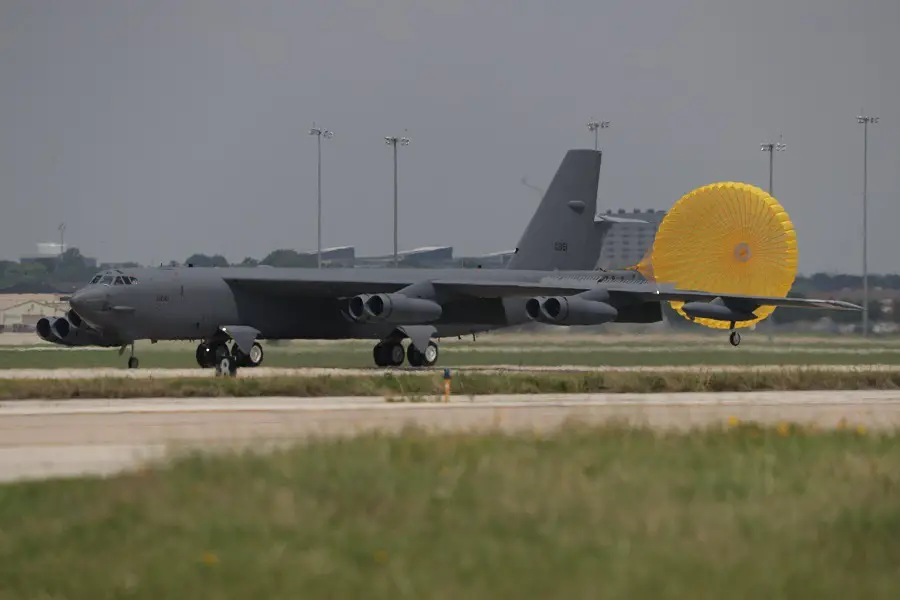A B-52 from the 307th Bomb Wing arrived at a Boeing Co., facility in San Antonio, on May 25, to begin receiving the Active Electronically Scanned Array system (AESA), as part of the Air Force’s B-52 Radar Modernization Program. In addition to increased situational awareness and navigation and targeting ability, AESA is designed to be adaptable, so that new capabilities to address future threats, can be added via software modifications. Boeing and Raytheon are both heavily involved in the installation process. Installation of AESA is one of the largest upgrades to the B-52 in the history of the fleet. The effort will cost approximately $2.8 billion, with initial operational capability expected in 2027. Sustainability is an important part of this effort, because the old radar is unsustainable. The advancement in combat capability that AESA will bring is really critical in keeping this aircraft effective with our near-peer adversaries. The new radar is an enabler for our long-range standoff capability and will prepare the aircraft for optimized lethality.
“The arrival of this aircraft is a big deal,and signals the beginning of a key part of our effort to modernize the B-52 fleet. AESA will replace 1960s radar technology, and greatly increase the navigation and targeting capabilities of the B-52 in higher threat areas. Boeing is the OEM [original equipment manufacturer] for the B-52, so their long-standing history and knowledge of the platform is really critical to making sure we can get this [AESA] out as quickly as possible. We are also working with Raytheon on the radar side. Overall, the partnership helps ensure we have a government off-the-shelf solution that minimizes development and helps reduce both the development and test timelines,” said Col. Louis Ruscetta, senior materiel leader for the Air Force Life Cycle Management Center’s B-52 Program Office, which is leading the Radar Modernization Program, and overall effort to modernize the bomber.

The Boeing B-52 Stratofortress is an American long-range, subsonic, jet-powered strategic bomber. The B-52 was designed and built by Boeing, which has continued to provide support and upgrades. It has been operated by the United States Air Force (USAF) since the 1950s. The bomber can carry up to 70,000 pounds (32,000 kg) of weapons, and has a typical combat range of around 8,800 miles (14,200 km) without aerial refueling. Beginning with the successful contract bid in June 1946, the B-52 design evolved from a straight wing aircraft powered by six turboprop engines to the final prototype YB-52 with eight turbojet engines and swept wings. The B-52 took its maiden flight in April 1952. Built to carry nuclear weapons for Cold War–era deterrence missions, the B-52 Stratofortress replaced the Convair B-36 Peacemaker. The B-52’s official name Stratofortress is rarely used; informally, the aircraft has become commonly referred to as the BUFF (Big Ugly Fat Fucker/Fella).
The B-52 has been in service with the USAF since 1955. There are 72 aircraft in inventory as of 2022;[8] 58 operated by active forces (2nd Bomb Wing and 5th Bomb Wing), 18 by reserve forces (307th Bomb Wing), and about 12 in long-term storage at the Davis-Monthan AFB Boneyard. The bombers flew under the Strategic Air Command (SAC) until it was disestablished in 1992 and its aircraft absorbed into the Air Combat Command (ACC); in 2010, all B-52 Stratofortresses were transferred from the ACC to the new Air Force Global Strike Command (AFGSC). Superior performance at high subsonic speeds and relatively low operating costs have kept them in service despite the advent of later, more advanced strategic bombers, including the Mach 2+ Convair B-58 Hustler, the canceled Mach 3 North American XB-70 Valkyrie, the variable-geometry Rockwell B-1 Lancer, and the stealth Northrop Grumman B-2 Spirit. The B-52 completed 60 years of continuous service with its original operator in 2015. After being upgraded between 2013 and 2015, the last airplanes are expected to serve into the 2050s.

















